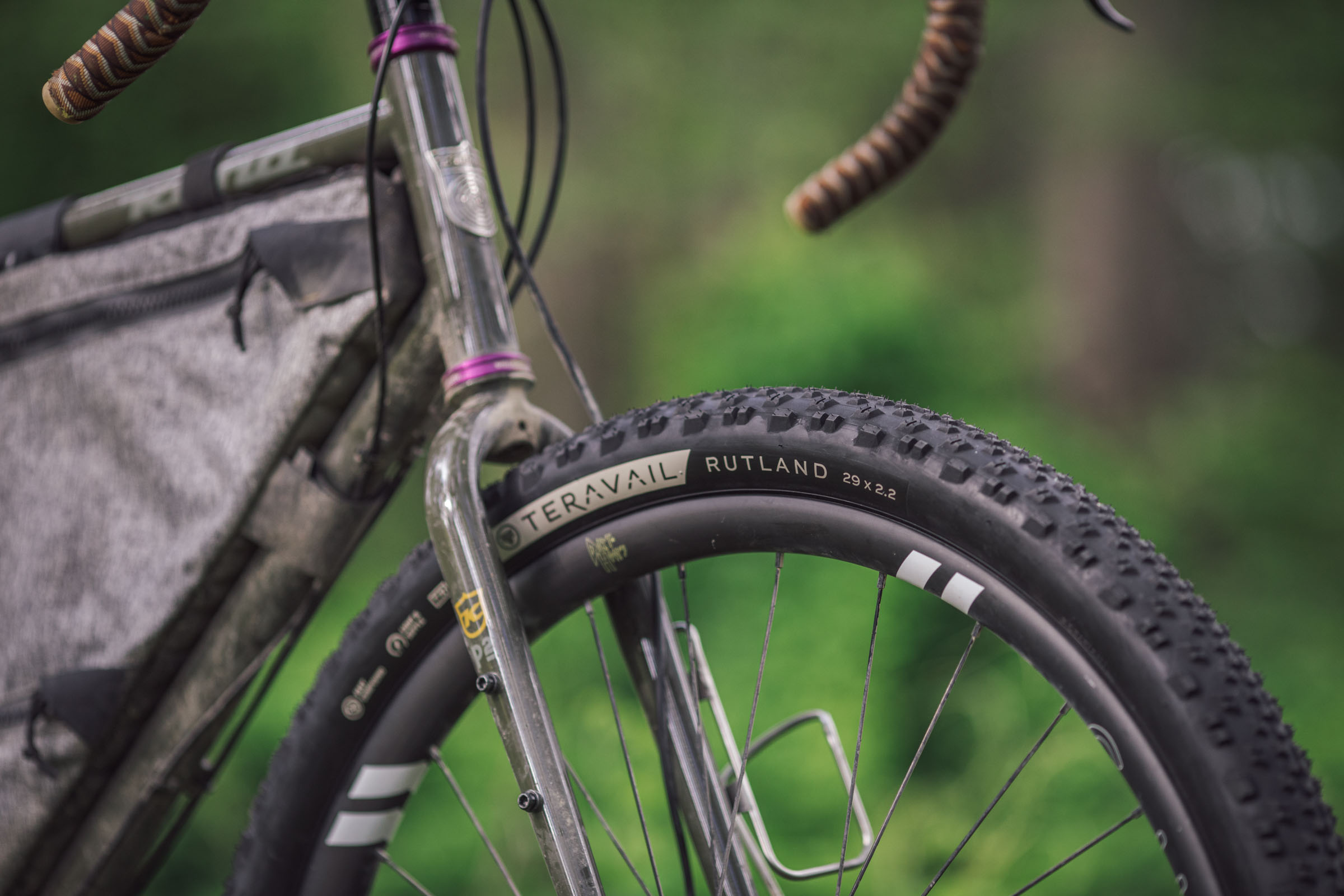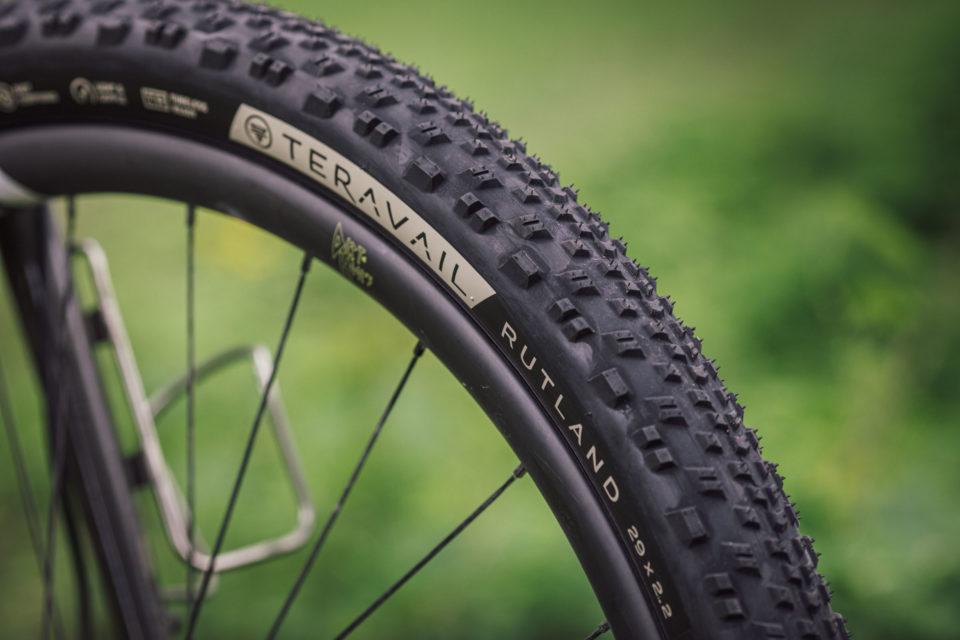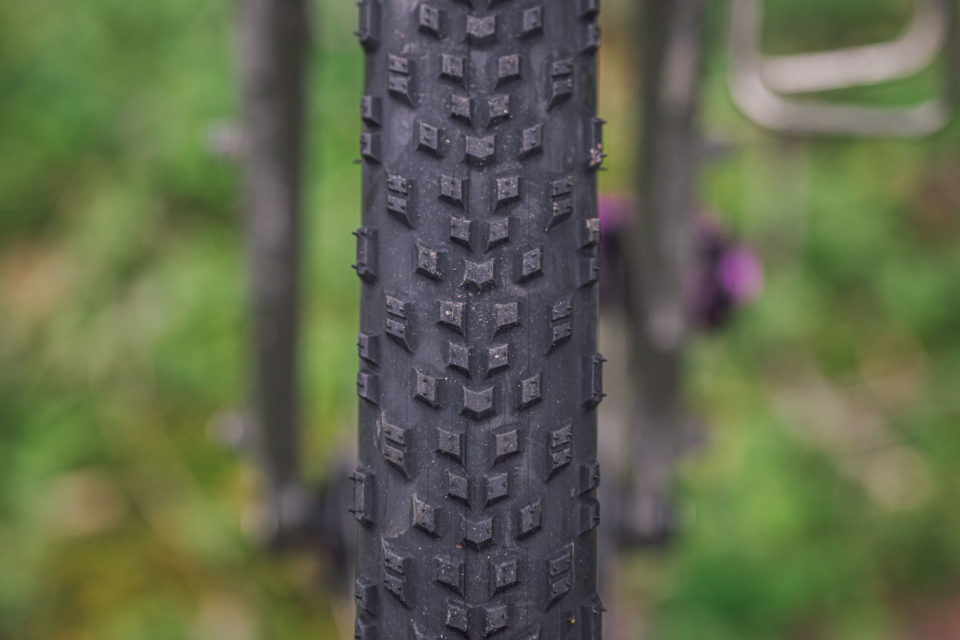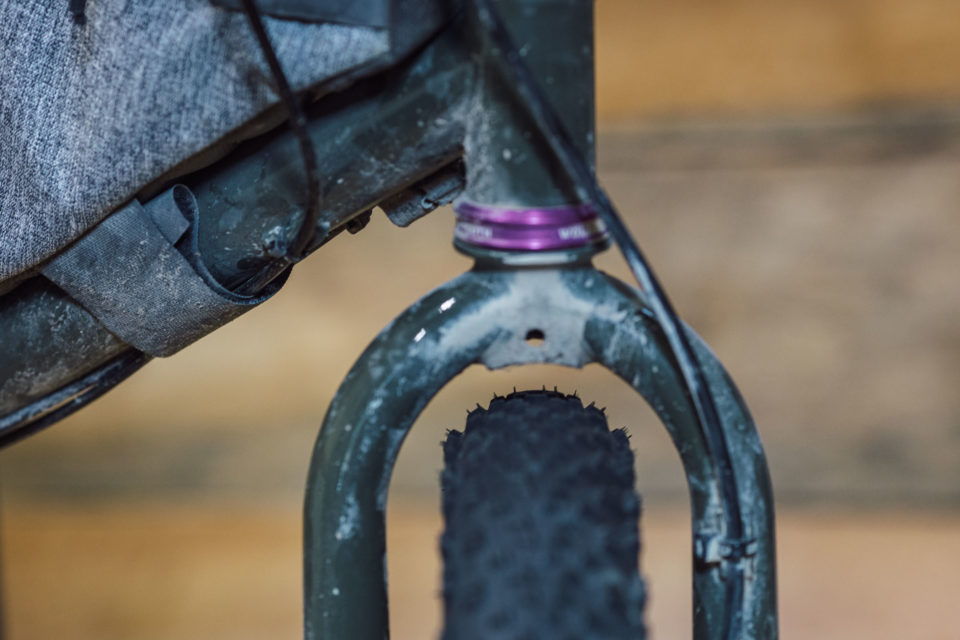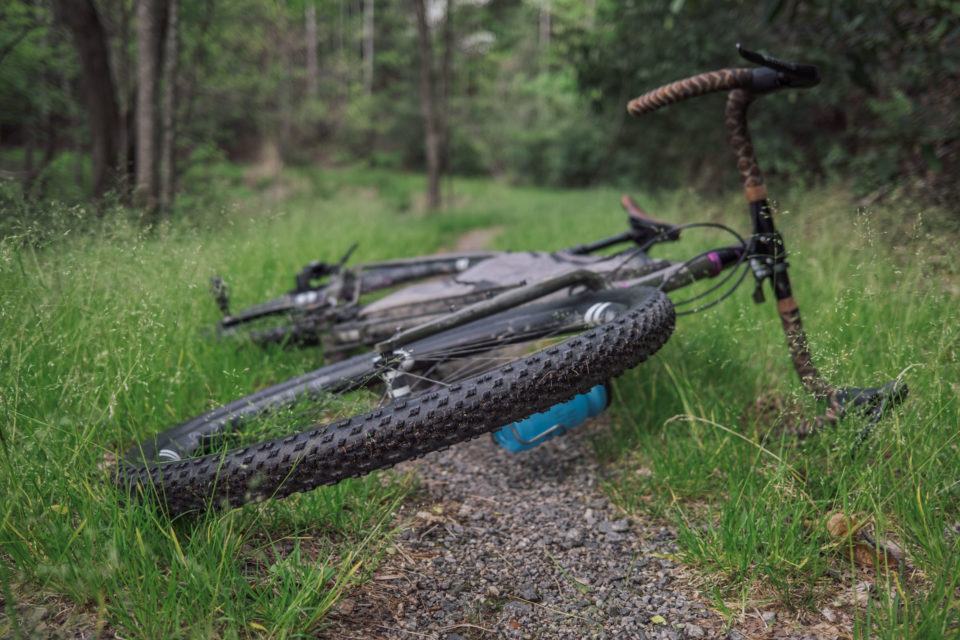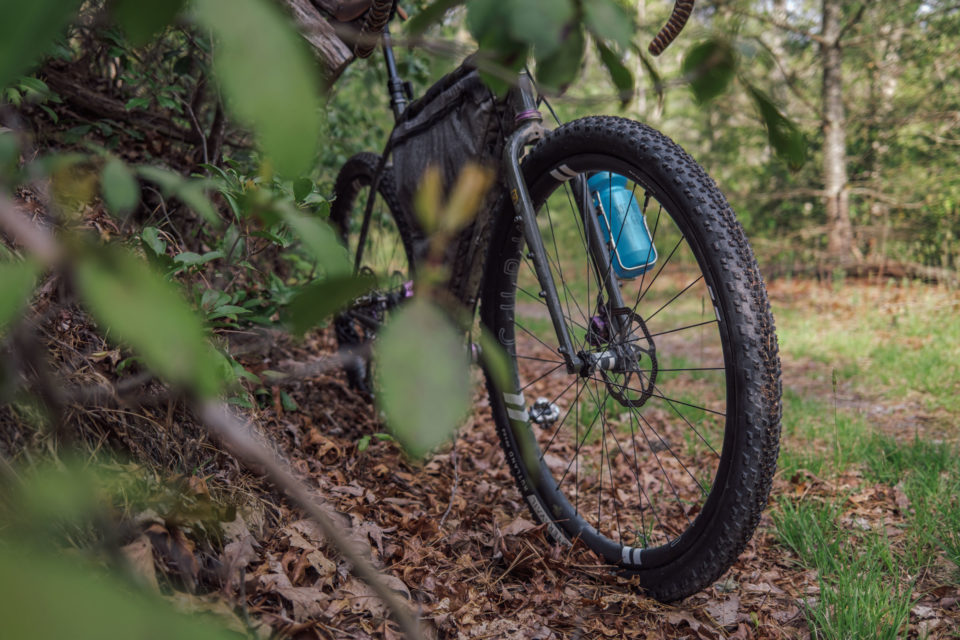Teravail Rutland Review: Monstre Gravier
Teravail just announced larger, 2.1 and 2.2-inch, “monster gravel” versions of the Rutland mixed terrain tire. We had a chance to give them a look and put a few rides on the 29 x 2.2″ model prior to release. Here are our impressions and details about the new tires…
It’s been a while since I’ve ridden a bike with tires smaller than 2.0″ wide, and that’s fine by me. Over the past couple of years, I’ve come to the opinion that even gravel bikes should have big tires—a sentiment that’s manifested in the 2.1″ minimum clearance used as a metric in our indexes of drop-bar 650b and 29er rigs.
I completely understand why 38-45mm tires are the choice for many, but for me, the extra cushion is crucial for comfort and reduced fatigue for long rides. Fortunately, there are now quite a few MTB tire options over 2.0″ that aren’t just for mountain biking. Some are even being marketed specifically for mixed surface sub-niche styles of riding. The new 700c x 47mm, 27.5 x 2.1″, and 29 x 2.2″ Teravail Rutland tires embrace this concept wholeheartedly.
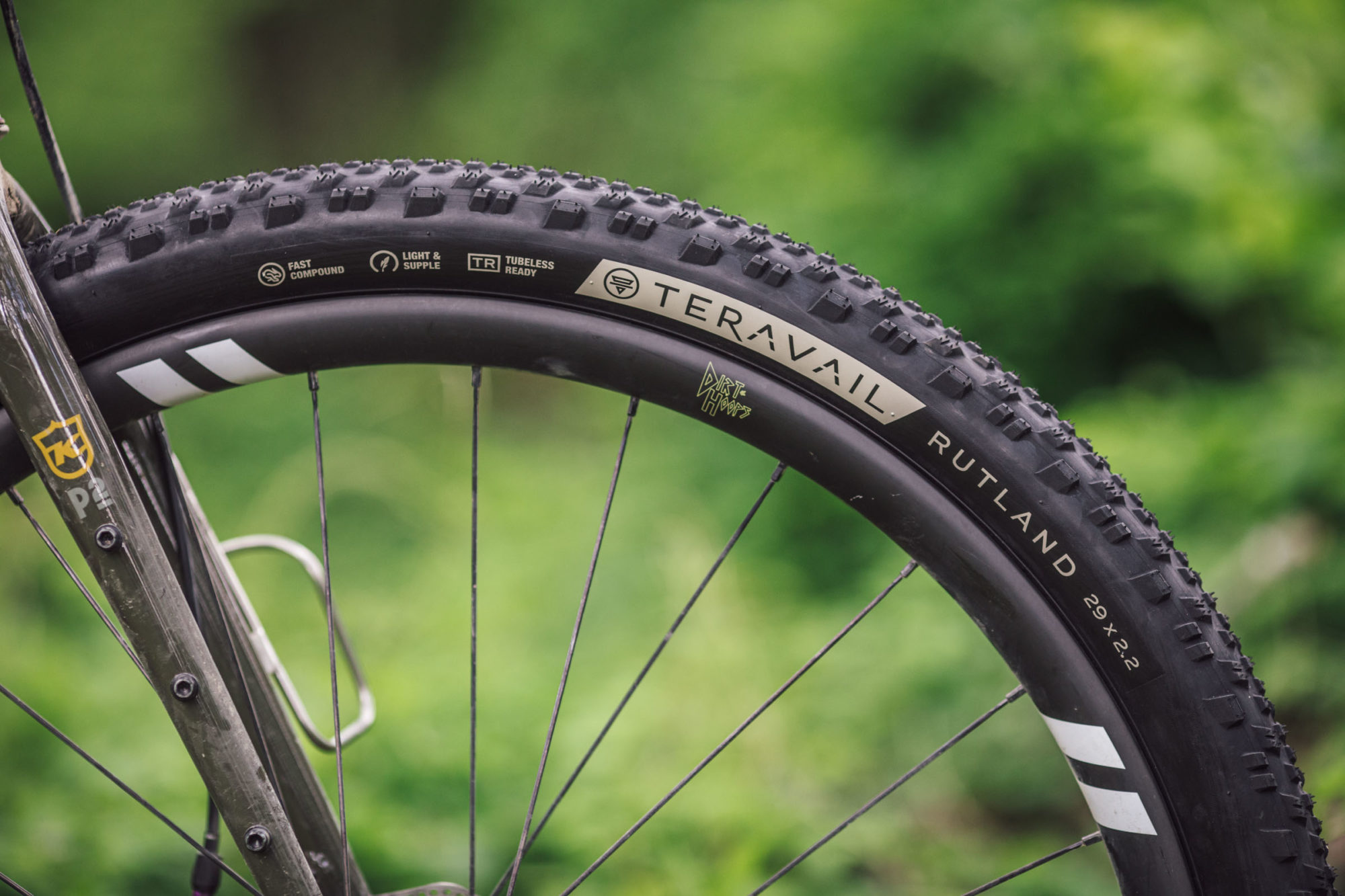
Prior to these size additions, the Teravail Rutland was only offered in 700c x 38/42mm and 650b x 47mm. Despite the fact that these are gravel/all-road category sizes, Teravail positioned the Rutland as a mixed terrain tire. Their marketing lede sums it up with, “Designed with the unknown in mind, the Rutland takes the guess work out of selecting the right tire for the ride.” Some might argue that the larger iterations of the Rutland aren’t really for a gravel bike at all, but I digress. Bikes that come to mind for these tires include the likes of the Salsa Cutthroat, Sutra LTD, and MOOTS Baxter, which as far as I’m concerned, are perfect gravel bikes, and about as gravel as I care to get.

All that said, I love the fact that Teravail specs the Rutland as a relatively category-less tire. After all, category definitions are often more befuddling than clarifying. Not too long ago I had someone stop me on a local trail. He was on an XC-oriented Trek hardtail and noticed my frame-bag equipped hardtail (which was actually more of an aggressive trail bike with heavily lugged trail tires). He looked it over and said “I’m thinking about getting a gravel bike, too. I’d love do the Great Divide Trail out west. I’ve never done anything like that, but it looks exciting.” I told him that the bike he had would be perfect for it, and that the bike I had wasn’t really a gravel bike at all. He kind of looked puzzled, but given that we were trying to keep our social distance, I didn’t delve too much deeper and carried on down the trail. All that’s neither here nor there with this tire review, but my point is that the term gravel often seems to be misappropriated and confusing. I suppose my version of gravel involves a faster pace via pavement to access some actual gravel with the option to hop on some rough two-track and manageable singletrack, all while staying relatively comfortable, going much faster than I would on my trail bike, and enjoying the nuances of drop-handlebars. The tires I’ve gravitated toward for this type of riding include the 2.2″ Teravail Ehline, Schwalbe’s Rock Razor, the WTB Riddler, and the 2.25″ Maxxis Rekon Race. What makes these four tires special is their fast-rolling center tread coupled with significant side knobs that allow me to corner with confidence—not really doable on a 38mm gravel tire, in my opinion.
All of the tires I mentioned above are categorized as XC mountain bike tires, however. Are they so different from the “mixed terrain” specced Teravail Rutland? Not really. Well, maybe a little. Similar to the Rekon Race, the new Teravail Rutland features ramped, tightly spaced center lugs to reduce rolling resistance. The Rutland’s very fast… faster than the 2.25″ Rekon Race. I think this can be attributed to slightly smaller lugs and a more rounded profile, something prevalent in Teravail’s line. In fact, both the Sparwood and the Ehline have a notable rounded profile. Similar to the Ehline, I’ve found that running the Rutland at a lower tire pressure (about 21/22 PSI) helps keep them stable on loose and rubbly terrain. The deep profile also adds to these tires’ suppleness.
The Rutland also has very well placed, semi-aggressive shoulder and transition lugs to provide excellent cornering grip. On the trail, I’ve found it to feel nearly as confident as the Ehline, but a little more snappy, and significantly faster. The Rutland is about 10 steps ahead of the Sparwood for cornering confidence, in my opinion, and almost as fast. I’ve found the Sparwood to feel a bit squirrely in the corners and on loose surfaces. The shoulder lugs seem to do an excellent job in that regard. In the calipers, the 2.2″ Rutland measures true-to-width at 55.9mm (2.20 inches) at the outer tread.

I asked Neil Beltchenko what he thought about these tires since he’s had a pair on his Cutthroat for the past two months. Here’s what he had to say: “After throwing a quick 700 mixed terrain miles on the new Rutland 2.2” over the last 6 weeks, I think I have a good idea of where this tire thrives. While it may not have the rolling capabilities of the Sparwood, the Rutland picks up where the Sparwood leaves off, making my Cutthroat a much more capable machine on tight and twisty singletrack. The well-designed tread pattern corners nicely over loose gravel, sheds mud as desired, and keeps me in line for confident climbing on steep grades. The Rutland gives me a better feel for the bike and seemingly knows no bounds paired with any big-clearance drop bar bike.”
- New sizes 700 x 47, 27.5 x 2.1 or 29 x 2.2
- Models tested 27.5 x 2.1 and 29 x 2.2 (both in Light and Supple casing)
- Actual Weight (27.5 x 2.1) 672 grams
- Actual Weight (29 x 2.2) 761 grams
- Place of Manufacture Taiwan
- Price $65 ($60 for 27.5)
- Manufacturer’s Details Teravail.com
The new Teravail Rutland sizes will be available in QBP inventory in the next couple of days. In addition to the models shown here, the Rutland will be offered in Tan Wall option, and both will be available in a Durable casing. Also, note that Teravail announced a 700 x 47mm Cannonball tire at the same time.
Wrap Up
Having sought after the perfect XC MTB tire over the past couple of years for my personal breed of gravel bike, I’m happy to see brands embracing tires that fit this niche. Call it monster gravel, mixed terrain, or whatever you’d like, the fact of the matter is Teravail had this style of riding in mind when they revamped the Rutland with three wider sizes.
After a few rides, I’m quite impressed with the 29 x 2.2″ Rutland. It’s very fast, supple, and holds its own in the corners. And with the same tread compound as its more aggressive sibling, the Ehline, it’s also quite sticky. I was very impressed on a couple steep climbs out of the saddle, both on rubbly gravel and litter-strewn singletrack. Only time will tell, but I also hope that the tread will hold up as well as that of the Ehline—the pair I used in Colombia is still in great condition after well over 1,000 miles of use.
Please keep the conversation civil, constructive, and inclusive, or your comment will be removed.






